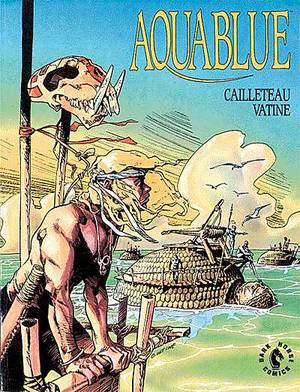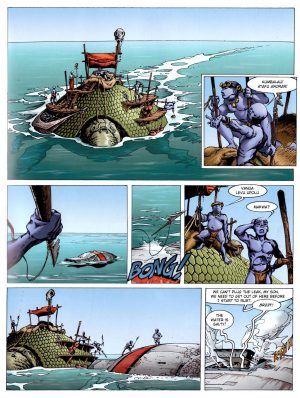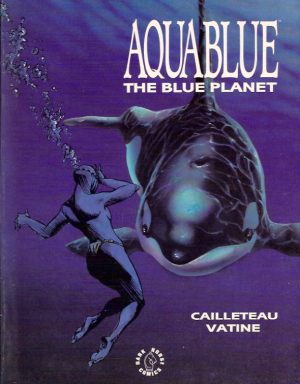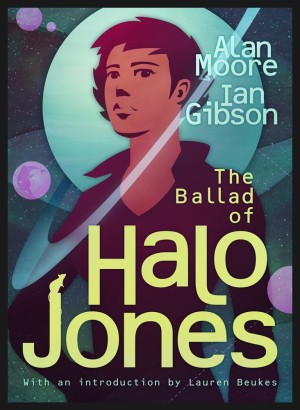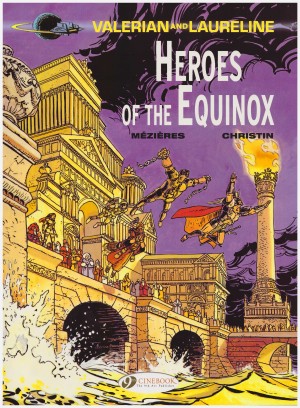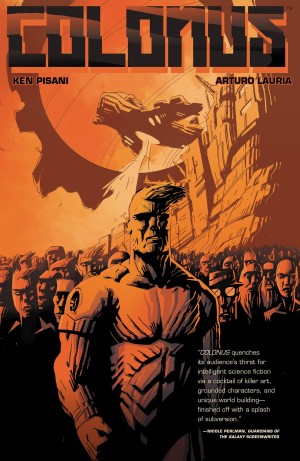Review by Ian Keogh
Aquablue opens with a pleasing homage to Superman’s origin, as the human series star is dispatched by dying parents from an exploding spaceship as an infant, and eventually carried to an inhabitable planet. Nao’s relationship with his craft, however, is more interactive. The controlling computer program has a mobile robotic extension with a voice and personality, which sees Nao to safety on a primarily water based planet where he grows to his late teens among the blue inhabitants of small island communities. He has an advantage, seemingly chosen as special by a giant whale on arrival, so fulfilling a local prophesy.
Making its début long before Kevin Costner’s Waterworld film, Thierry Cailleteau’s science fiction series has proved an enduring success across Europe, running to sixteen albums so far, although Cailleteau himself jumped ship after ten, while artist Olivier Vatine only drew the first four books. Only this opening volume and the next, The Blue Planet, have been translated into English, an indication of the difficulty of selling quality European material to a superhero-saturated American market in 1989-1990.
It’s not immediately obvious, but both a strong conservation agenda and a spiritual reverence run through Aquablue, neither employed just as background for a single story, but as foundation stones for the series. Nao has grown to manhood before other humans arrive on the planet, the first being cultural anthropologist Mr Dupré, but rapidly thereafter corporate representatives intending to disrupt the planet’s ecological balance in the interests of power generation. In the end the plot turns to who Nao was as an infant, and its effect on events.
Aquablue is a fun adventure, illustrated in a loose style by Olivier Vatine, who’s impressive, but still developing artistically in 1989, leading to some cramped pages. His design for the planet’s inhabitants is interesting in deliberately minimising features. It’s a logical decision for beings who spend much of their time in water, but makes his job more difficult when it comes to visual characterisation, which is conveyed by exaggerated gesture.
This is thoughtful science fiction aimed at a young adult audience, and that’s the category under which it won an Angoulême prize in 1989.
